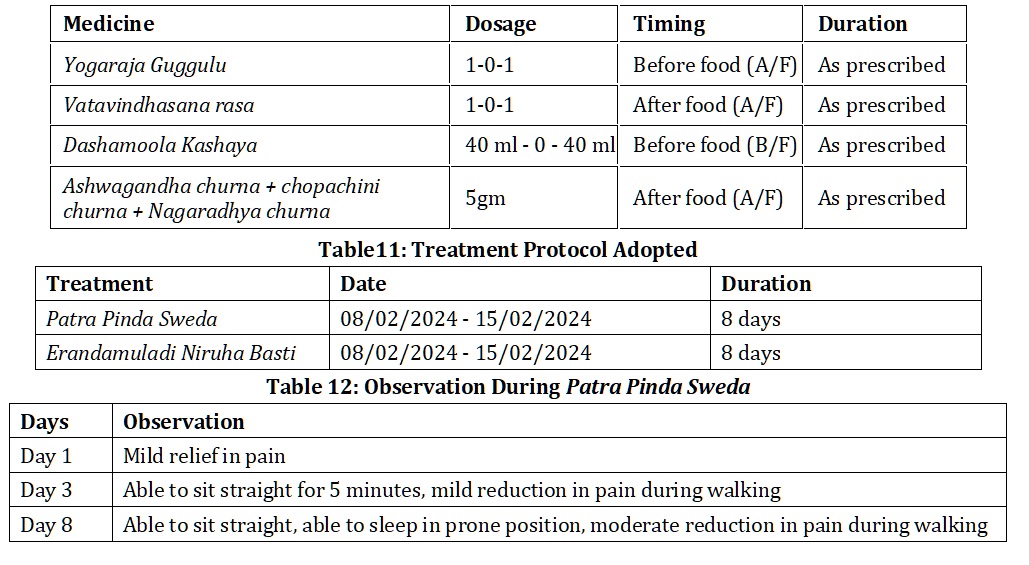Management of Gridhrasi Through Panchkarma
DOI:
https://doi.org/10.47070/ayushdhara.v11i6.1797Keywords:
Gridhrasi, Sciatica, Panchkarma, Patra Pinda Sweda, Erandmuladi Niruha Basti.Abstract
Gridhrasi, classified under Vatavyadhi in Ayurveda, is a condition characterized by pain originating in the Sphik (hip) region and radiating through the Kati (lower back), Prushta (thoracic region), Uru (thighs), Janu (knees), Jangha (calves), and Pada (feet). It closely resembles sciatica due to the similarity in clinical presentations. Sciatica is defined as pain radiating along the sciatic nerve, typically caused by a herniated disc. This results from the protrusion or extrusion of the nucleus pulposus through a rent in the annulus fibrosus, compressing the nerve root and leading to severe pain radiating from the lower back to one or both lower limbs. The condition most commonly occurs during the fourth decade of life, with a lifetime incidence ranging from 10% to 40%. This case study highlights the effective Ayurvedic management of a 43-year-old female patient presenting with lower back pain radiating to the right lower limb. Treatment modalities included Patra Pinda Sweda, Erandmuladi Niruha Basti. Following the treatment, the patient reported significant improvement in symptoms, including pain relief, reduction in heaviness and tingling sensations, and enhanced range of movement.
Downloads

Downloads
Published
Issue
Section
License
Copyright (c) 2024 AYUSHDHARA

This work is licensed under a Creative Commons Attribution-NonCommercial-ShareAlike 4.0 International License.


